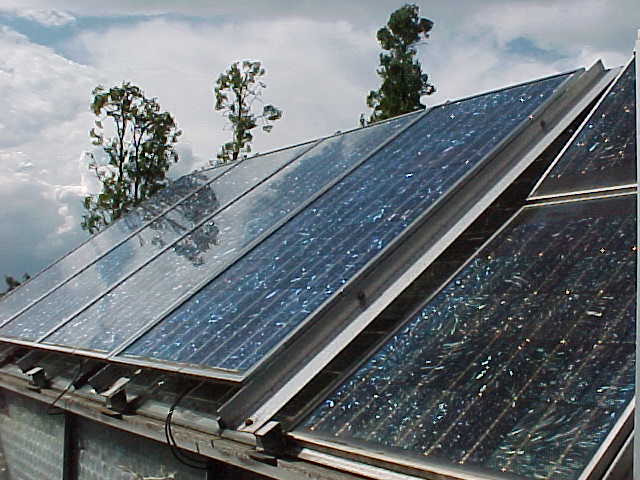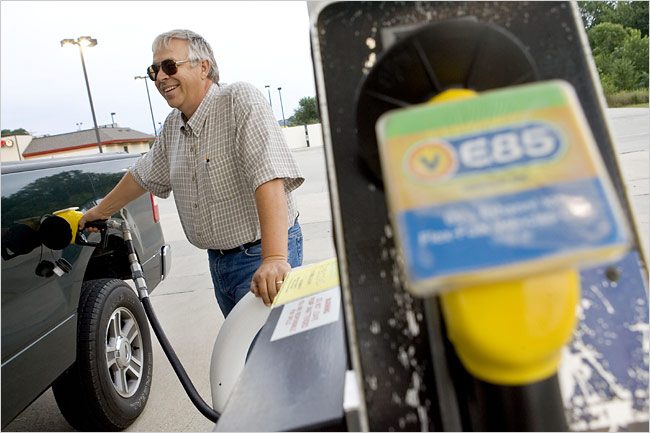Scientists now have a new, efficient way of producing hydrogen fuel from sunlight and water. Using Earth-abundant materials, as opposed to rare metals, scientists have obtained a record-breaking 12.3 percent conversion efficiency from solar energy to hydrogen. By combining a pair of solar cells, made with a mineral called perovskite and low cost electrodes, they have developed a highly efficient method for generating hydrogen fuel through solar water splitting.
At the Laboratory of Photonics and Interfaces at EPFL, led by Michael Grätzel, Grätzel’s post-doctoral student Jingshan Luo and his colleagues were able to obtain this spectacular performance, published last thursday in the journal Science.
Entitled, Water Photolysis at 12.3% Efficiency via Perovskite Photovoltaics and Earth-abundant Catalysts, the study was published by Jingshan Luo, Jeong-Hyeok Im, Matthew T. Mayer, Marcel Schreier, Mohammad Khaja Nazeeruddin, Nam-Gyu Park, S. David Tilley, Hong Jin Fan, and Michael Grätzel. The team’s device converts 12.3 percent of the energy diffused by the sun into hydrogen on perovskite absorbers.
Hydrogen Harvesting With Abundant, Cheap Resources
Perovskite is a compound that can be obtained in the laboratory from common materials, such as those used in conventional car batteries, eliminating the need for rare-earth metals in the production of usable hydrogen fuel.
“Both the perovskite used in the cells and the nickel and iron catalysts making up the electrodes require resources that are abundant on Earth and that are also cheap,” explained Jingshan Luo. “However, our electrodes work just as well as the expensive platinum-based models customarily used.”
New Storage Potential For Solar Energy
The conversion of solar energy into hydrogen makes it possible to store it. This addresses one of the biggest disadvantages faced by renewable electricity, which is the requirement to use it at the time it is produced.
“Once you have hydrogen, you store it in a bottle and you can do with it whatever you want to, whenever you want it,” said Michael Grätzel. Hydrogen gas can be burned, for example in a boiler or an engine, releasing only water vapor. It can also pass into a fuel cell to generate electricity on demand. And the 12.3% conversion efficiency achieved at EPFL “will soon get even higher,” promised Grätzel.
Perovskite’s Higher Voltage Advantage
The high efficiency conversion is based on a characteristic of perovskite cells. They are able to generate an open circuit voltage greater than 1 V, whereas for example, silicon cells stop at 0.7 V.
“A voltage of 1.7 V or more is required for water electrolysis to occur and to obtain exploitable gases,” explained Jingshan Luo. To get these numbers, three or more silicon cells are needed, whereas just two perovskite cells are enough. As a result, there is more efficiency with respect to the surface of the light absorbers required. “This is the first time we have been able to get hydrogen through electrolysis with only two cells!” Luo adds.
The profusion of tiny bubbles escaping from the electrodes as soon as the solar cells are exposed to light say it eloquently without words. This new combination of sunlight and water paves a promising and effervescent way for developing a cheaper alternative energy for the future, with huge economic advantage.
Check out the video presentation of EPFL’s work on YouTube:
(Top Image Note: Oxygen and hydrogen bubbles forming on low-cost NiFe catalysts. ©Alain Herzog – Ecole Polytechnique Fédérale de Lausanne)






Combine this advance with Wind, Wave, Hydro, Tidal, geothermal, bio-mass, and we may see the end of fossil fuels ruling our lives . . .